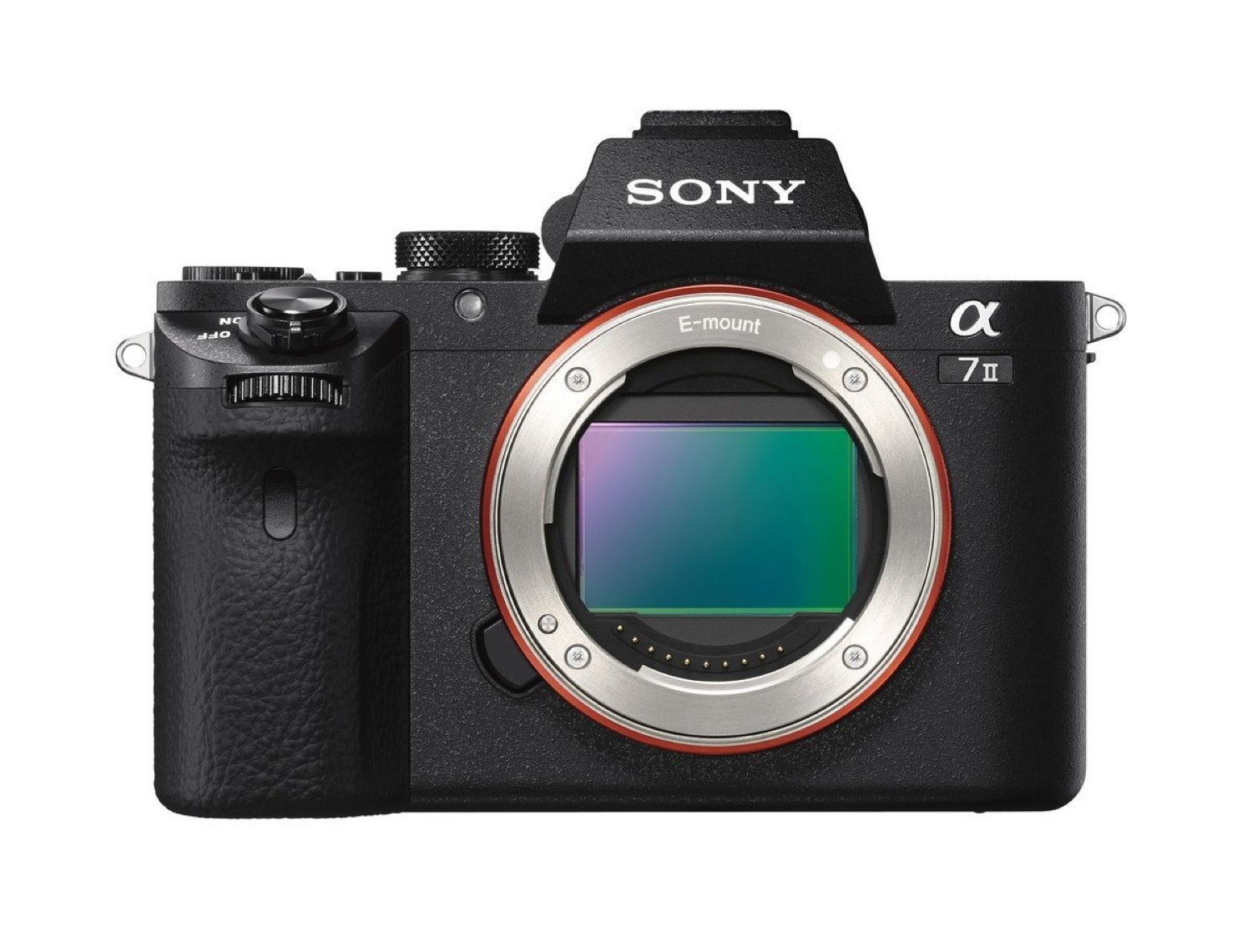Tom's Guide Verdict
Packing 5-axis, in-body image stabilization and a full-frame sensor in a petite, sexy body, Sony's Alpha a7 II has a lot to offer.
Pros
- +
Effective 5-axis image stabilization
- +
Bright, clear pictures
- +
Fast access to settings
- +
Surprisingly small for a full-frame camera
Cons
- -
Slow writing to memory card
- -
Quirky autofocus
- -
Motion distortion from shutter roll in action video
Why you can trust Tom's Guide
Sony's full-frame mirrorless camera, the 24.3-megapixel Alpha a7 II, is trying to do a lot on the very edge of today's technology, which makes it impressive but also a bit quirky. Like its predecessor, the a7, this camera packs the kind of full-frame sensor normally found in giant, pro DSLRs into a body no larger than that of a standard mirrorless camera with a much smaller sensor.
A standout improvement is the in-body 5-axis image stabilization, which Sony claims is a world's first in a full-frame mirrorless camera. But the a7 II has some flaws, including finicky autofocus and slow write speeds — making this investment worthwhile for some photographers but not for others. Still, it's the best mirrorless camera with a full-frame sensor you can get for less than $1,000. Read the rest of our Sony a7 II review to see why it's also one of the best cameras overall.
Sony a7 II design: Petite, sexy and solid
The a7 II looks about as close to sexy as a professional camera gets. It has a nearly identical body to its forerunner, the a7, as well as its siblings the a7R (which boasts higher resolution) and the a7s (which functions in extreme low light and shoots 4K video). The image-stabilization system adds just a few extra millimeters to the height and thickness. You could jam just the main slab of the black, magnesium-alloy body into the front pocket of a pair of jeans.
MORE: DSLR vs. Mirrorless Cameras: Which is right for you?
The camera measures 5 inches across, 3.7 inches high, and 1.4 inches deep. A firm handgrip on the right-front side and a massive electronic viewfinder on the back push the total depth to about 3.8 inches. The body weighs a manageable 21 ounces (1.3 pounds). A copper-colored ring around the lens mount adds a welcome bit of nonfunctional flair.
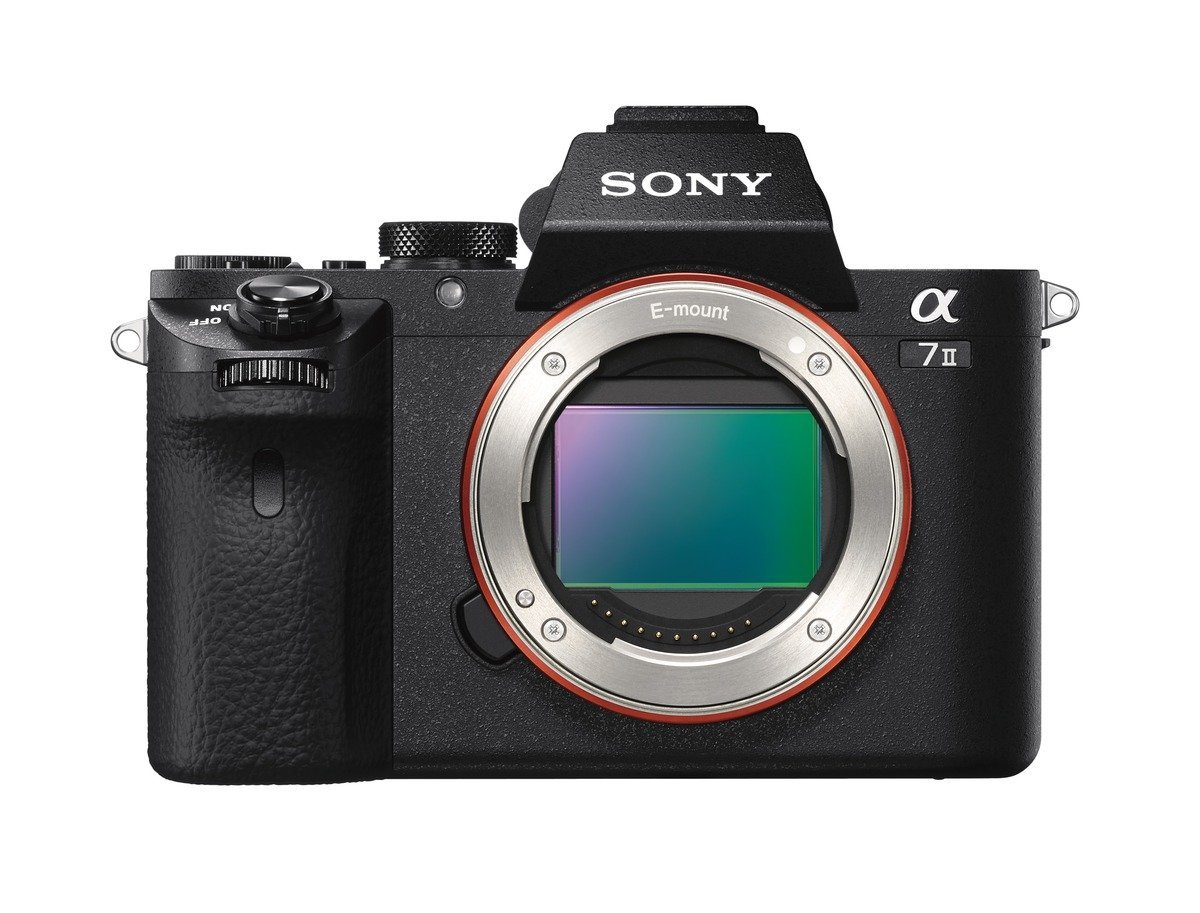
The a7 II has a 3-inch LCD that, as with many other Sony cameras, pulls back from the camera so that it can tilt up about 100 degrees or down about 40. Sony doesn't give a resolution in pixels for the screen, but we reckon it's about 800 x 600 (1,228,800 dots). Also, as with other Sony cameras, the a7 II's LCD is not a touch screen. This appears archaic given how many cameras, from point-and-shoot to pro DSLR, have touch screens now.
The a7 II welcomes DSLR switchers with its massive OLED electronic viewfinder with a 1024 x 768resolution; its brightness and clarity rival any optical eyepiece. Along with brightness, you can even adjust the viewfinder's color temperature for a more accurate preview. Bands along the top and bottom report the settings, such as shutter speed aperture and ISO. You can also set the viewfinder to display a line-level or histogram.
Unfortunately, something that hasn't changed from earlier a7 models is a wonky light sensor that is meant to switch off the rear LCD and turn on the EVF when you bring the viewfinder up to your eye. Instead, it blackened the LCD when we held the camera any closer than about 4 inches away from the torso. That makes it hard to hold a camera low and close to the body, with the LCD tilted up, for taking stealthy candid shots or keeping the camera steady when shooting video.

Sony a7 II interface: Master Controls
The a7 line shows that Sony knows how photographers think: fast. Scads of customizable buttons and knobs provide access to just about any adjustment you want, so you can get the shot before the moment ends. In addition to standard fare like a shooting mode dial (Manual, Program, etc.) and a combo four-way rocker and wheel on the back, the a7 II features thumb and index-finger dials on the back and front, an exposure compensation knob on the top right and four Custom buttons that can be set for nearly any function.

In our shooting, for example, we set the C1 and C2 buttons behind the shutter release to bring up the metering mode and focus area selectors, which we often adjust as the subject changes. We programmed C3 (up near the rear dial) to bring up the white balance selector, which we often fiddle with at night, and set C4 (down in the lower right corner of the camera back) to change ISO settings. A button labeled "Fn" brings up a customizable on-screen menu with icons for up to 12 functions for anything left over after you assign the physical buttons. You navigate the icons using the four-way directional pad/wheel.
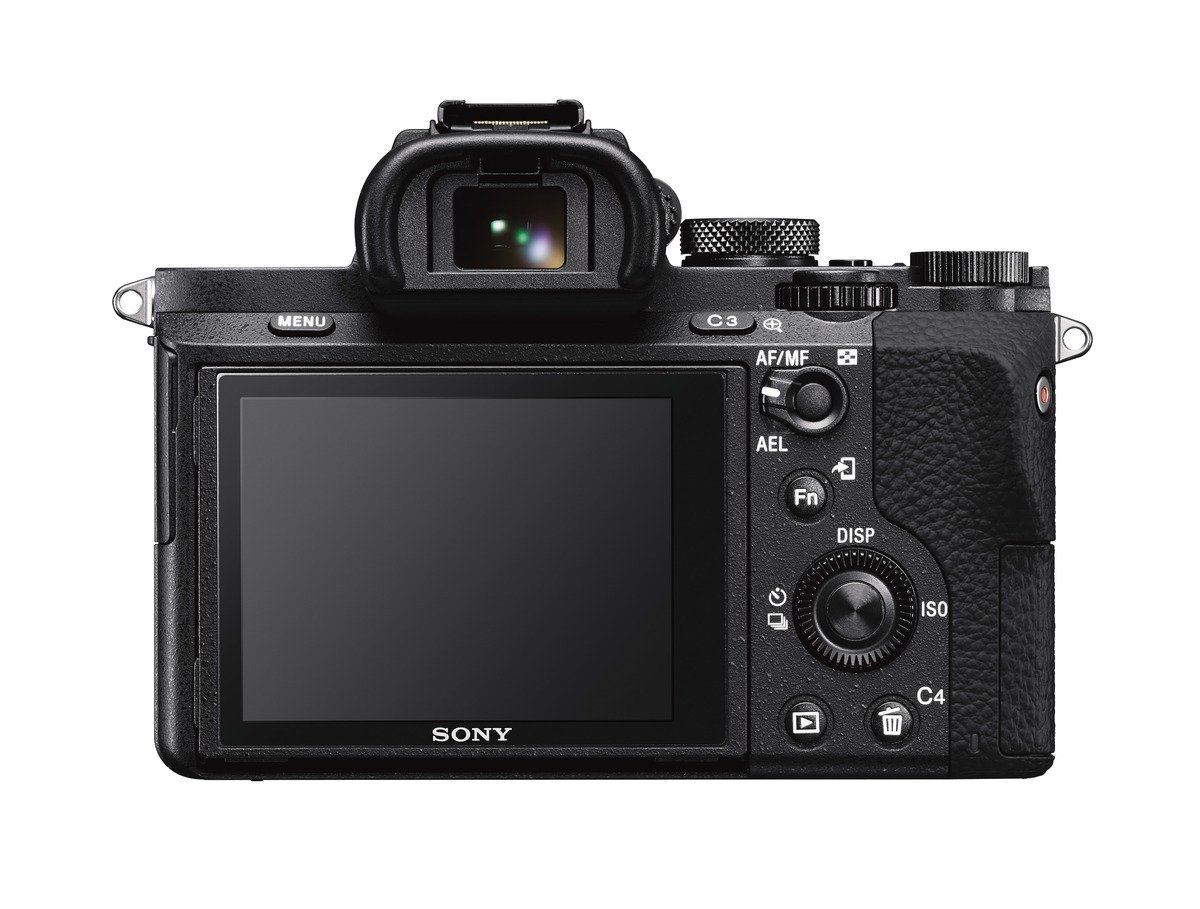
Although using the directional pad was pretty fast, a touch screen would have been nice, especially for setting focus points on the fly for action shots. Sony's entry-level mirrorless camera, the $350 (body only) a5100 has that capability, but the $1,700 a7 II doesn't.
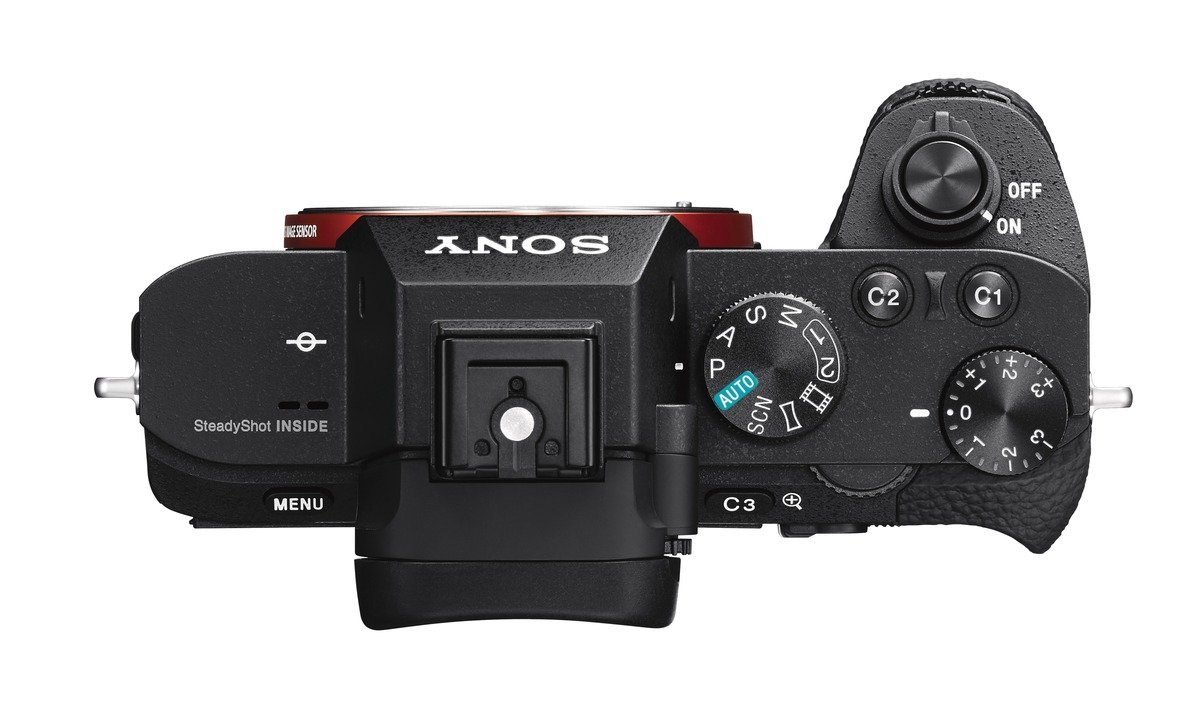
Sony a7 II: 5-axis image stabilization
The major innovation of the a7 II is a 5-axis image stabilization system. It silently shifts the huge sensor not just for pitch (the camera rotating up and down) and yaw (rotating side to side) movements that regular stabilized senses do.
MORE: Best mirrorless cameras
By moving the sensor instead of a lens element, the a7 II can also compensate for movement on the X axis (side to side) and Y axis (up and down) as well as roll movement (twisting). That means you can use a much slower shutter speed to let more light into your shot and still get a crisp image.

Thanks to this system, we were able to snap away like paparazzi during a helicopter tour of New York City at dusk. Even though the chopper was shaking throughout the ride, we managed to capture many sharp shots of the stunning vista.
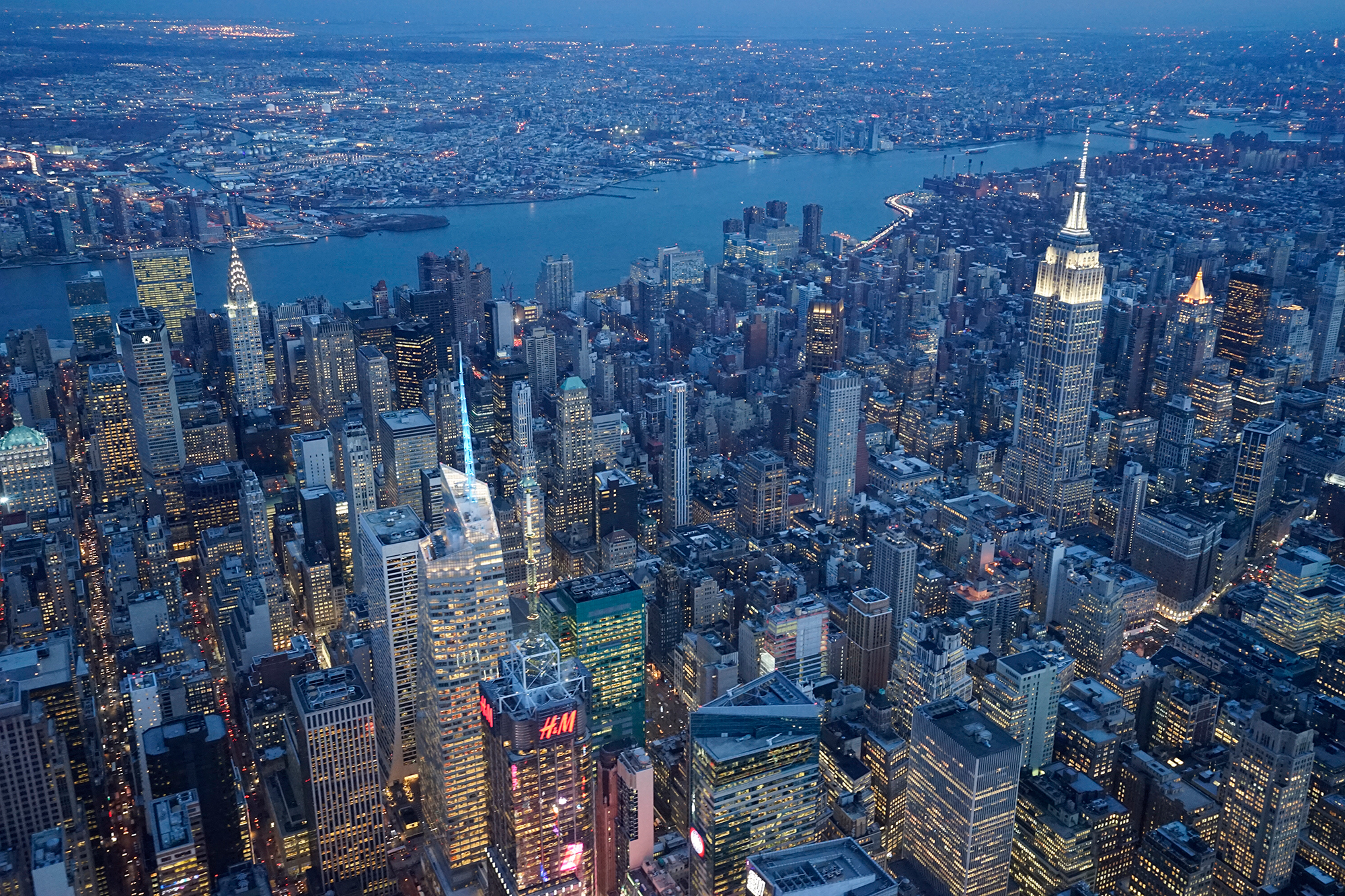
Video recorded during the helicopter trip, as well as on a bumpy car ride, looked shockingly steady. (More about that in the video section, below.)
Sony a7 II image quality: Bright, beautiful and sharp
With the kit FE 28-70mm F/3.5-5.6 OSS lens, the A7 II snapped decent pictures with good clarity and color. Sony also lent us a $1,998 Zeiss 16-35mm F/2.8 ZA lens that took clearer and brighter pictures with more pronounced shallow depth of field (background blur). Most of the images included in this review were shot with the 16-35mm lens.
MORE: How to Take Great Photos With a DSLR or Mirrorless Camera
In bright light, the Sony A7 II delivered pictures that were vivid and clear. This photo of co-author Sean leaning against a graffitied wall in Brooklyn on a cloudy day shows accurate color, down to his brown eyes and the pink paint on the wall.
The A7 II also accurately captured a colorful display of spices at a market, with red, brown and orange powders and green spices looking true.
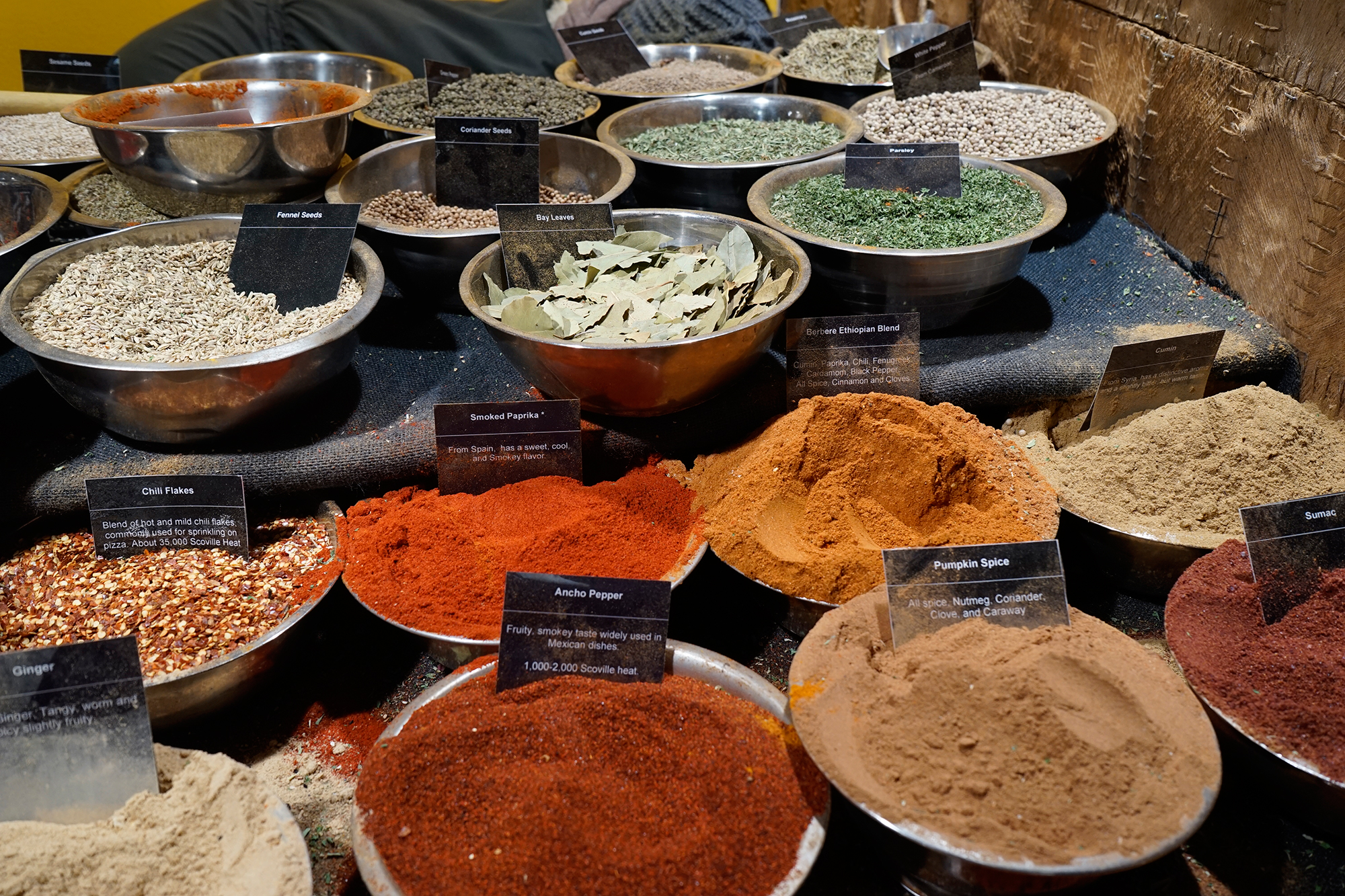
In low light, the A7 II continued to impress. Even at high ISO light sensitivity levels of 16,000 and 25,600, the images displayed a relatively small amount of noise (graininess).
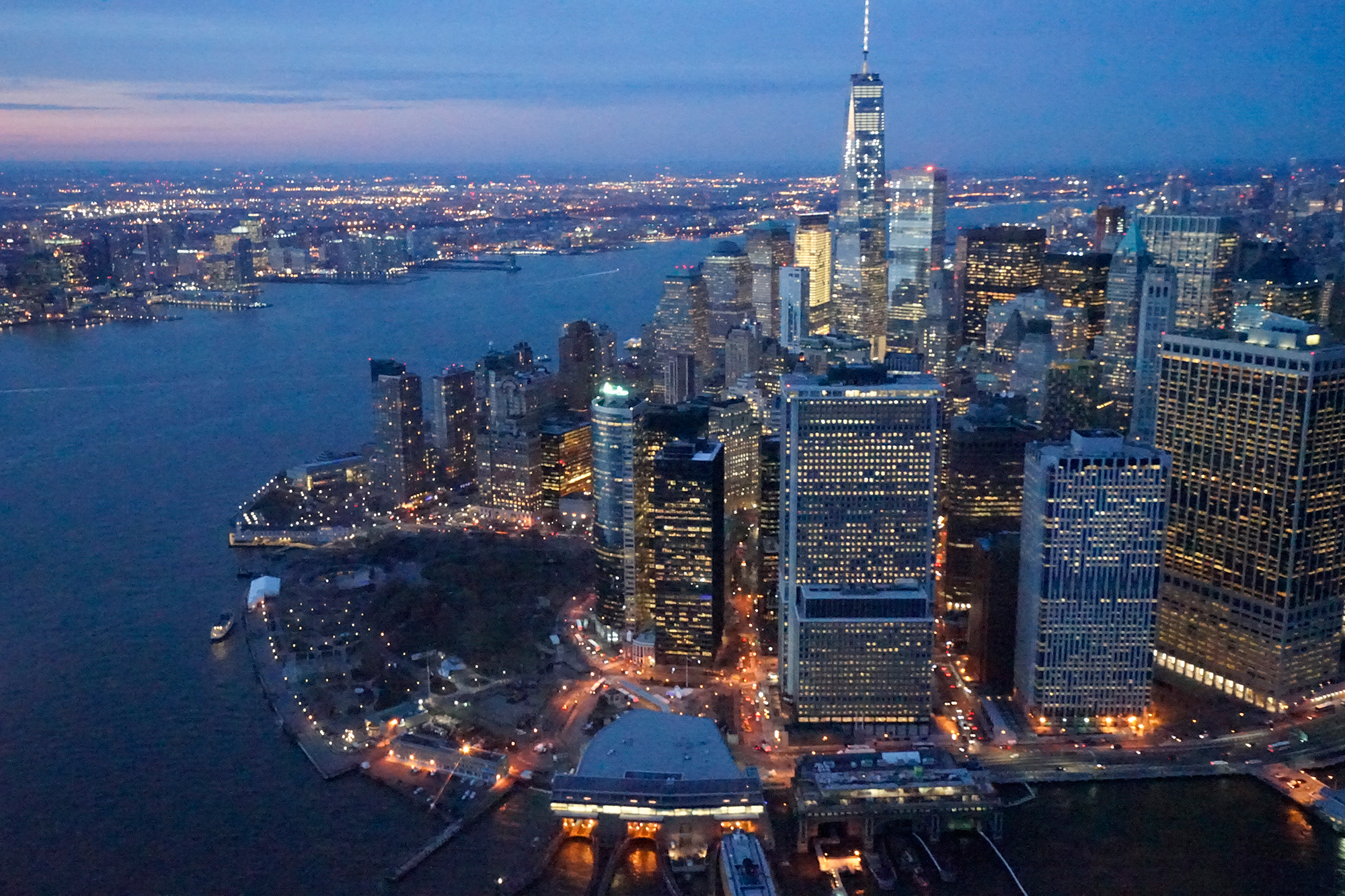
Our pictures looked bright and sharp, with outlines of buses and cars on the streets rendered clearly. Speckles of color noise were noticeable only in darker parts of the scene, such as in the river.
Sony a7 II autofocus and speed
It's hardly a speed demon, but with a shooting speed of 5 fps (slowing down after 22 shots when the buffer fills up), the A7 II is a fast shooter.
The camera was mostly quick to focus, thanks to the improved autofocus system that packs 117 wide-area phase-detection AF points and 25 contrast-detection AF points. Sony says the new system makes the A7 II 30 percent faster than its predecessor. There was hardly any lag in focus as we framed shot after shot of a stunt artist jumping on a trampoline, while the platform we stood on shook with her bounces.
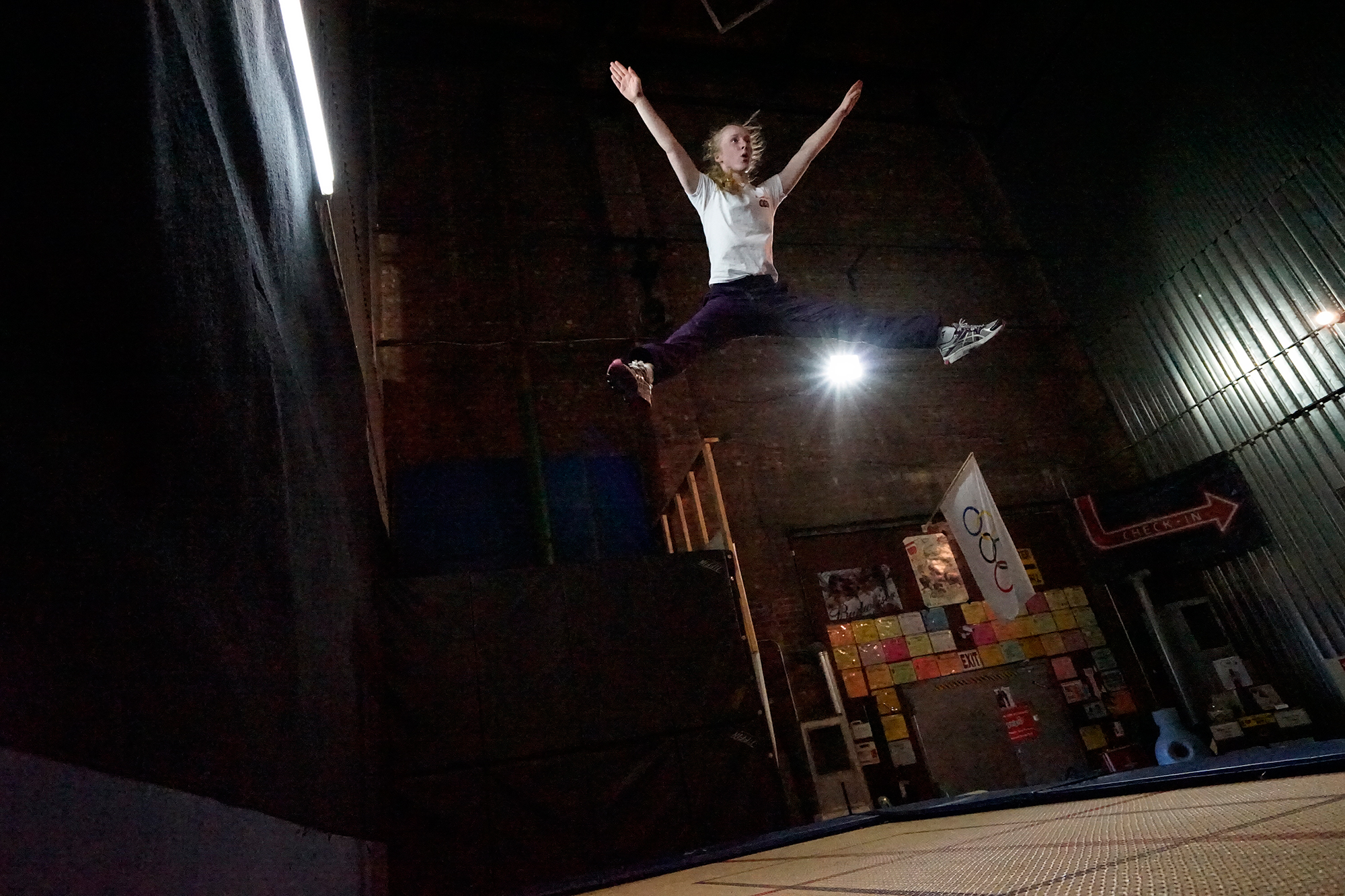
One challenge of the a7 II is determining which focus settings to use. For any candid shots, in which the subject is moving and the best time to shoot is hard to gauge, we went with the Lock-on AF:Wide setting, combined with the Continuous AF. A half-press on the shutter lets you designate the item to keep in focus, which the AF will track as you or the subject move. In addition, Face Detection effectively found people, even if they were turned to the side.
MORE: Camera Wars: Why Autofocus is the New Megapixel
However, the A7 II often missed and fired before having focused. During a cable car ride to Roosevelt Island, for example, this pair of portrait shots came out blurry, with nothing in the foreground or background in focus at all.
Another aspect of the A7 II that slowed down our shooting was the inordinately long time it took to write to the memory card. After taking as few as three shots, we often had to wait about 30 seconds before we could view pictures on the camera. This happened despite us using a Class 10 SDHC/SDXC microSD card provided by Sony. We've reached out to Sony for word on this and have yet to hear back.
Sony a7 II video quality: Not quite pro
The a7 II has some powerful video hardware, but it's hampered by the same large sensor that's an asset to still photos. And it doesn't rise to the high standard for a still camera/video camera hybrid set by rival Canon's 5D Mark II and 70D DSLRs.
Stability is the a7 II's trump card. During our helicopter ride over Manhattan not only was the chopper rocking back and forth, it often jerked from side to side and up and down and twisted: a perfect test of the a7 II's X (horizontal), Y (vertical) and roll stabilization. The system didn't eliminate all the jostling, as Sony freely told us it wouldn't. But even when the camera heaves up or to the side, motion blur affects the view below far less than we expected it to. Considering the minimal light and attendant ISO of 10,000 or above, this video is about as sharp as could be expected.
Still, something didn't look right. Peering closer, we noticed the jellolike wiggle and shape distortion of shutter roll. The sensor, recording the image one line of pixels at a time, couldn't keep up with a fast-moving subject: Slightly mismatched lines of the image come together to make a stretched, distorted picture. You can see it more clearly when we slow things down.
The same effect occurred when filming a game of tag between co-author Cherlynn and our officemate Sam. Also, while the stabilizers leveled out some of our bouncy camera motion, they weren't better in this situation than those of other high-end, stabilized camcorders.
Rolling shutter is obvious in this frame from the beginning of the video. Focus is fine, as you can tell by looking at Sam. Captured at the beginning of her stride, Cherlynn is unrecognizable due to rolling shutter. You can also see plenty of wavy, rainbow-colored moiré patterns on the brick building in the background to her right. Many cameras suffer this effect, but the a7 II is meant to be a cut above.
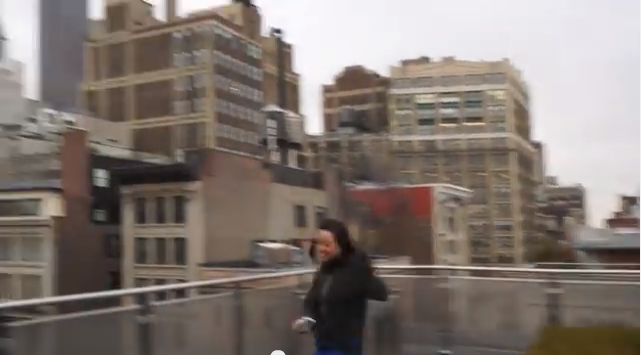
The larger the sensor, the longer it takes to read out data, and the worse the shutter roll gets -- unless the camera applies sophisticated correction algorithms. Canon's 5D Mark III, with a full-frame sensor like the a7 II, processes out shutter roll better. We also saw less distortion in our review of the Canon 70D. Its APS-C class sensor is about a third the size of the Sony's full-frame chip.
In less action-packed settings, the a7 II's video is handsome. This slow pan over spices at a holiday market shows lovely color and detail. Even at this slow speed, though, you can see the rainbow effect of diffraction on the plastic labels in the spice bowls.
Using just auto white balance, the a7 II captured this subway performance with just a minimal green tint from the fluorescent lights. The focus snaps quickly from the woman walking toward the camera at the beginning of the clip to the musicians, and face-tracking works as advertised.
Still, the quality isn't radically better than the video from Sony's $500, entry-level a5100 mirrorless camera, which focuses at least as well under far-more demanding conditions. However, that's as much a testament to the quality of even Sony's low-end models.
The a7 II's tiny stereo mics record surprisingly strong and clear sound. Along with the external mic jack that's obligatory for all but entry-level cameras, the a7 II also features a headphone jack for monitoring audio levels while you are filming.
The a7 II's video doesn't lack for detail: The new XAVC S codec records full-HD video at up to 50Mbps. That 34-second clip of the subway musicians consumes 224 MB. If you're posting online, expect a lot of compression (as in the YouTube clips we've embedded). If you're a video editor, the wealth of raw data gives you welcome latitude to make adjustments.
But if you intend to shoot and edit a lot of video, you can do better than the a7 II — not only due to its rolling shutter, but because it's capped at HD resolution. The new, $1,500 (body only) Samsung NX1 mirrorless camera (which we're reviewing) records in HD, Ultra HD and DCI Cinema 4K; Panasonic's slightly older GH4 does the same for the same price. Sony's a7S, a $2,500 sister camera to the a7 II, also records in 4K. Its full-frame but low-resolution (12MP) sensor allows it to grab crisp footage without a big lighting rig.
Sony a7 II battery life: Fleeting
Endurance is one of the a7 II's weaknesses. Sony reckons a capacity of 270 shots if you use only the viewfinder or 350 with only the LCD. (That gorgeous EVF consumes way more juice.) Using a mix of EVF and LCD, we eked out just 121 photos (mostly shooting simultaneous JPEG and RAW files) and 46 1080p/60fps videos adding up to 10.5 minutes of footage. You can turn off the camera's image stabilization when you don't need it, and this will extend the shooting time, though Sony hasn't calculated by how much.

In any case, you'll probably want to get a second battery, which Sony sells for $80. An external charger for $60 is also a good idea, so you can save time by charging both packs at once. Otherwise, you can charge just one battery in the camera, using a USB charger. In my test, the battery took a leisurely 3 hours or so to charge in-camera, using a 12-Watt USB charger. (Sony left out the camera's charger, so I used one for an iPad.)
Sony a7 II: Lenses and accessories
We tried the A7 II with its kit lens (FE 28-70mm f/3.5-5.6 OSS) and a $1,999 Zeiss Vario-Sonnar T FE 16-35mm F2.8 ZA SSM lens and saw much better image quality from the latter. While the kit lens offered good color and clarity, the Zeiss glass delivered brighter images that were sharper and, thanks to a larger max aperture, could show more obvious shallow depth of field.
The A7 II is compatible with all 19 of Sony's E mount (full-frame) lenses, and the company recommends seven of them for the new camera. These range from prime lenses suitable for portraits, such as the FE 35mm f/2.8 ZA ($799), to zoom lenses, such as the $1,498 FE 70-200mm f/4 G OSS, for more versatility.
Third-party lens makers, such as Sigma, Tamron and Tokina, also have a selection of E Mount glass that is compatible with the A7 II.
To accommodate the new A7 II's slightly thicker profile than its predecessor, Sony also made new accessories: a $330 vertical grip (VG-C2EM) and a $150 soft carrying case (LCS-ELCB). Sony has a selection of tripods, monopods, remote controls and flashes for the camera, including the $350 VCT-VPR10 remote control tripod and the $550 HVL F60M LED flash.
Sony a7 II: Wireless capabilities
Want to upload your shots to Facebook or Dropbox right away? The A7 II's built-in Wi-Fi and NFC capabilities make sharing images a cinch.
After downloading Sony's PlayMemories app on an iPhone 5s (running iOS 7), we selected Send To Smartphone from the Wi-Fi tab in the camera's menu. In a couple of steps, we connected an iPhone to the camera's Wi-Fi network and started saving pictures to the phone's album.
Making a Wi-Fi connection on an HTC Desire Eye (running Android KitKat) was similarly smooth, and the PlayMemories app for Android packs an additional Share option for easier posting directly to social networks. NFC pairing to initiate the Wi-Fi connection was simple; the devices linked so quickly that we didn't even realize it happened.
iPhones don't support NFC pairing, and the iOS version of PlayMemories just lets you download images to your phone. You have to open separate apps for sharing.
Sony a7 II verdict
Sony's a7 line is the first family of cameras to get the attention of pros — not only for fitting a full-frame sensor in a device much smaller than a DSLR, but also for providing the comfortable design and array of easy-access controls that serious shooters look for. Sporting a nearly identical shell, the a7 II adds a phenomenal 5-axis stabilization system that puts it in a class of its own for pro-level action cameras. The lens selection is steadily growing, and we like the results we've seen from several of the models. If shooting high-end video is part of your repertoire, Canon is a better way to go (or Samsung or Panasonic, if you want 4K). But for quality still photography, no other camera offers so much capability in so small a package.
Sony a7 II Specs
Model name: Sony Alpha a7 II
Megapixels:24.7
Type:Mirrorless
Price: $1,700 (body)
Shots per sec, max: 5
Sensor type: Full-frame CMOS
Kit lens option:28-70mm zoom
AF points and type(s):117 phase detection, 25 contrast detection
Shutter speed range:1/8000 to 30 seconds
Main video resolutions/frame rates:1080p and 1080i at 60fps, 30 fps and 24 fps; 1440 x 1080 and 640 x 480 at 30p (various data rates)
Video file format(s):XACV S (for 1080), AVC-HD (for 1080), MP4 (others)
Built-in flash: No
Hot Shoe: No
Card type (and multiple slots?): SDXC, Memory Stick XC-HG Duo
Ports (HDMI, USB, etc.):USB, HDMI, mic, headphone
Battery and shots per charge:1080 mAh, 340 shots (with LCD on)
Wireless capabilities: Wi-Fi, NFC
Image stabilization: 5-axis in-body
Dimensions and weight:5 × 3.87 × 2.37 inches, 1 pound, 3.6 ounces (body only)
Sean Captain is a freelance technology and science writer, editor and photographer. At Tom's Guide, he has reviewed cameras, including most of Sony's Alpha A6000-series mirrorless cameras, as well as other photography-related content. He has also written for Fast Company, The New York Times, The Wall Street Journal, and Wired.
-
awotz Hi Sean,Reply
you should update your camera's firmware to the latest version and then report back with an updated review. There is notable improvement in many of your listed cons. -
bwana4swahili Personally I think a touch screen is totally useless when using a camera with a good viewfinder and quite often causes problems from accidental "hits". I'm very happy that Sony has not included a touch screen on their A7 series cameras. A Pro in my mind!!Reply
